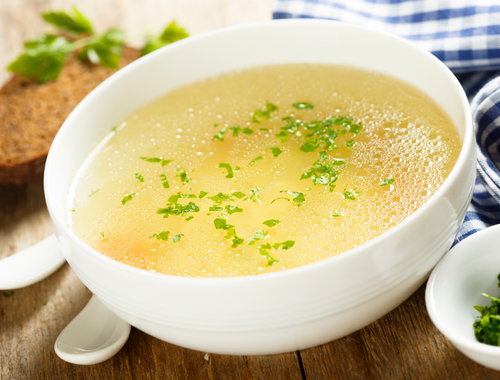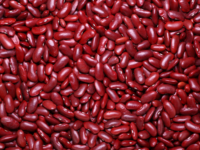One way to enhance the flavors of your favorite meals is to use broth or stock. Of course, you might use plain old water, but these liquids, which are filled with flavor, give you an advantage.
You may use them to make rice, risotto, polenta, grits, beans, casseroles, and more. In addition, they provide hearty, rich flavors to your favorite soup recipes.
Although the two are different, the names are frequently used synonymously. This is because they share many similarities. Read on to learn exactly what stock and broth are and their similarities.

What is Broth?
Broth is usually created by boiling meat in water, often with herbs or some vegetables. Then, various culinary uses for this flavoring liquid are explored. Typically, the word “broth” exclusively applied to liquids that had been boiled with meat. But nowadays, many people take veggie broth.
Technically, any liquid with meat cooked in it is referred to as broth. It is prepared by cooking meat (which may or may not have bones), mirepoix, and aromatics in water for a brief period, typically less than two hours.
Although almost any meat can be used, chicken, beef, and vegetable flavors are the most popular ones in broth. In addition, recently, there’s been an increase in the popularity of bone broth, which is created by simmering bones, vegetables, or herbs in water for almost a day.
As cooking meat too long results in hard flesh, the broth is cooked for a small period. The finished broth can then be refilled with the chopped meat, which can subsequently be used in various recipes or to prepare chicken soup.

What is Stock?
Raw stock is a foundation for soups, sauces, and even broth; it is not intended to be consumed independently. That’s because stock typically lacks salt or other flavoring seasonings.
Stock is a thick, flavorful liquid made by boiling bones, vegetables, and aromatics in water for many hours to extract the flavor. Protein, rather than a lot of sodium, gives the stock flavor. As a result, the stock typically has a richer mouthfeel and deeper flavor than broth, making it a healthier product.
A stock is a flexible culinary tool that can flavor a wide range of foods. It is better for use in soups, rice, sauces, and other dishes than broth. Add salt and other seasonings as desired to make them your own.
Animal bones, mirepoix (a combination of onions, carrots, and celery), and aromatics are simmered in water to create stock. Typically, these bones include some leftover meat. There are always bones in stock, but there may not always be flesh. Although it is not necessary, roasting the bones beforehand produces a stock that is richer and deeper in color.
On the burner, the stock is simmered for two to six hours. Due to the prolonged heating time, stock rarely has a thick or gelatinous texture and is unlikely to gel when cooled. As a result, the stock is always left unseasoned.
The simplest stock is created by simmering bones, water, and mirepoix (a combination of onions, carrots, and celery) for a long time. Longer boiling time softly extracts taste and induces collagen production in bones. When the stock is refrigerated, the collagen creates a jiggly texture.
Similarities Between Broth and Stock
Some of the similarities between stock and broth are given below.
Both are Made by Simmering Their Ingredients
Both stock and broth are created by simmering their contents, which might include vegetables, meat, bones, or fish. Both serve as the foundation for other foods like gravy, risotto, soups, and sauces. However, broth can also be eaten independently.
Bone broth is official stock even though it is usually referred to as broth because it needs the inclusion of bones.
Both Can be Substituted With Each Other
Although you should consider seasoning for your finished products, you can utilize stock and broth for much the same purposes when cooking.
The amount of spice needed will differ depending on whether the dish is made with broth or stock. Keep low-sodium broth in the pantry as your only alternative if you don’t want to prepare your own and don’t want to stock your larder with both options. This will provide you with a happy medium.
Both Can be Bought
Additionally, you can buy dried stocks and broths mixed with water before continuing with recipes. While broth bases are more frequently supplied as powders or cubes and can be known as bouillon, stock bases are typically sold as pastes or liquid.
Add water as per the directions on the package to either of these to make the quantity of broth or stock specified in your recipe.
FAQs
What is similar to a broth?
Stock is similar to the broth.
What are the differences between a stock and a broth?
Bones make stock, whereas meat or vegetables are used mostly to make broth. Compared to broth, which is often thinner and more delicious, the stock is thicker when bones are used.
What is the difference between stock and soup?
A stock is a basis for other items, such as a sauce or soup, which are considered finished products that consumers can consume.
What is similar to chicken stock?
Chicken broth can easily be replaced with vegetable broth because they are similar in taste and appearance.
What is similar to beef broth?
If you run out of meaty broth, chicken broth is a great backup because it is a common kitchen item.
What’s thicker broth or stock?
Stock is thicker and more time-consuming to produce because it is made from bones rather than flesh. This is because collagen and bone marrow are released during the lengthy, water-boiling process used to create it from bones or cartilage.
Which is better, broth vs. stock?
When it comes to providing body to a meal, the stock has a fuller, deeper flavor and texture, but broth may be a better option when you want to allow other ingredients to take center stage.












Leave a Reply